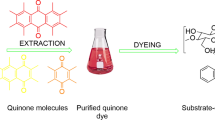Abstract
Since time immemorial, turmeric has been widely marketed and consumed as dietary supplement due to its diverse medicinal properties. Curcuminoids—comprising a mixture of curcumin (CUR), demethoxycurcumin (DMC), and bisdemethoxycurcumin (BDMC)—are the prime bioactive constituents of turmeric. However, the usage of curcuminoids is limited by their chemical instability. The lack of information on comparative stability profiles of curcuminoids (in pure and mixture form) prompted us to study how pure curcuminoids and their mixtures behave under different stress degradation conditions. The order of stability of curcuminoids when exposed to acidic, alkaline, and oxidative degradation was found to be as follows: BDMC > DMC > CUR. While the pure and mixture forms of curcuminoids were stable against heat, they completely degraded upon exposure to sunlight. The degradation extent of curcuminoids (in mixture form) was substantially less as compared to their pure form; therefore, this suggested the synergistic stabilizing influence of DMC and BDMC in the curcuminoids’ mixture.







Similar content being viewed by others
References
Ishita C, Khaushik B. Turmeric and curcumin: biological actions and medical applications. Curr. Sci 87: 44–50 (2004)
Singh P, Pandey K, Rizvi S. Curcumin: the yellow molecule with pleiotropic biological effects. Lett. Drug Des. Discov 13: 170–177 (2015)
Ahmed T, Gilani AH. Therapeutic potential of turmeric in Alzheimer’s disease: curcumin or curcuminoids? Phytother Res 28: 517–525 (2014)
Anand P, Thomas SG, Kunnumakkara AB, Sundaram C, Harikumar KB, Sung B, Tharakan ST, Misra K, Priyadarsini IK, Rajasekharan KN, Aggarwal BB. Biological activities of curcumin and its analogues (Congeners) made by man and mother nature. Biochem. Pharmacol 76: 1590–1611 (2008)
Tonnesen HH, Karlsen J. Studies on curcumin and curcuminoids V. Alkaline degradation of curcumin. Z. Lebensm. Unters. Forsch 180: 132–134 (1985)
Price LC, Buescher RW. Kinetics of alkaline degradation of the food pigments curcumin and curcuminoids. J. Food Sci. 62: 267–269 (1997)
Khurana A, Ho CT. High performance liquid chromatographic analysis of curcuminoids and their photo-oxidative decomposition compounds in Curcuma longa L. J. Liq. Chromatogr. 11: 2295–2304 (1988)
Gordon ON, Luis, PB, Sintim HO, Schneider C. Unraveling curcumin degradation: Autoxidation proceeds through spiroepoxide and vinylether intermediates en route to the main bicyclopentadione. J. Biol. Chem. 290: 4817–4828 (2015)
Wang YJ, Pan MH, Cheng AL, Lin LI, Ho YS, Hsieh CY, Lin JK. Stability of curcumin in buffer solutions and characterization of its degradation products. J. Pharm. Biomed. Anal. 15: 1867–1876 (1997)
Shen L, Liu C-C, An C-Y, Ji H-F. How does curcumin work with poor bioavailability? Clues from experimental and theoretical studies. Sci. Rep. 6: 20872 (2016)
Jankun J, Wyganowska-Swiatkowska M, Dettlaff K, Jelinska A, Surdacka A, Watrobska-Swietlikowska D, Skrzypczak-Jankun E. Determining whether curcumin degradation/condensation is actually bioactivation (Review). Int. J. Mol. Med. 37: 1151–1158 (2016)
Lee BH, Kim D, Kang S, Kim MR, Hong J. Changes in the chemical stability and antioxidant activities of curcuminoids under various processing conditions. Korean J. Food Sci. Technol. 42: 97–102 (2010)
Jadhav BK, Mahadik KR, Paradkar AR. Development and validation of improved reversed phase-hplc method for simultaneous determination of curcumin, demethoxycurcumin and bis-demethoxycurcumin. Chromatographia 65: 483–488 (2007)
Wichitnithad W, Jongaroonngamsang N, Pummangura S, Rojsitthisak PA. Simple isocratic HPLC method for the simultaneous determination of curcuminoids in commercial turmeric extracts. Phytochem. Anal. 20: 314–319 (2009)
Gugulothu DB, Fernandes, CB, Patravale VB. A versatile high performance liquid chromatography method for simultaneous determination of three curcuminoids in pharmaceutical dosage forms. Pharm. Anal. Acta. 3: 1–7 (2012)
Korany MA, Haggag, RS, Ragab MAA, Elmallah OA. A validated stability-indicating HPLC method for simultaneous determination of silymarin and curcumin in various dosage forms. Arab. J. Chem. (2013). doi:10.1016/j.arabjc.2013.06.021
ICH Q2(R1). Validation of analytical procedures: text and methodology. International conference on harmonisation of technical requirements for registration of pharmaceuticals for human use. (2005)
ICH Stability Testing of new drug substances and products Q1A(R2) International Conference on Harmonization. IFPMA, Geneva. (2003)
Gordon ON, Luis PB, Ashley RE, Osheroff N, Schneider C. Oxidative transformation of demethoxy- and bisdemethoxycurcumin: products, mechanism of formation, and poisoning of human topoisomerase IIα. Chem. Res. Toxicol. 28: 989–996 (2015)
Dandekar PP, Patravale VB. Development and validation of a stability-indicating LC method for curcumin. Chromatographia 69: 871–877 (2009)
Lee W-H, Loo C-Y, Bebawy M, Luk F, Mason RS, Rohanizadeh R. Curcumin and its derivatives: their application in neuropharmacology and neuroscience in the twenty-first century. Curr. Neuropharmacol. 11: 338–378 (2013)
Leung MHM, Colangelo H, Kee TW. Encapsulation of curcumin in cationic micelles suppresses alkaline hydrolysis. Langmuir. 24: 5672–5675 (2008)
Naksuriya O, van Steenbergen MJ, Torano JS, Okonogi S, Hennink WE. A kinetic degradation study of curcumin in its free form and loaded in polymeric micelles. AAPS J. 18: 777–787 (2016)
Schneider C, Gordon ON, Edwards RL, Luis PB. Degradation of curcumin: From mechanism to biological implications. J. Agric. Food Chem. 63: 7606–7614 (2015)
Khan MA, Shahidi F. Effects of natural and synthetic antioxidants on the oxidative stbility of borage and evening primrose triacylglycerols. Food Chem. 75: 431–437 (2001)
Rege S, Momin S, Wadekar S, Pratap A, Bhowmick D. Effect of demethoxycurcumin and bisdemethoxycurcumin on antioxidant activity of curcumin in refined sunflower oil. J. Food Process. Preserv. 38: 296–303 (2014)
Masuda T, Hidaka K, Shinohara A, Maekawa T, Takeda Y, Yamaguchi H. Chemical studies on antioxidant mechanism of curcuminoid: analysis of radical reaction products from curcumin. J. Agric. Food Chem. 47: 71–77 (1999)
Suresh D, Gurudutt KN, Srinivasan K. Degradation of bioactive spice compound: Curcumin during domestic cooking. Eur. Food Res. Technol. 228: 807–812 (2009)
Author information
Authors and Affiliations
Corresponding author
Ethics declarations
Conflict of interest
The authors declare no conflict of interest.
Rights and permissions
About this article
Cite this article
Peram, M.R., Jalalpure, S.S., Palkar, M.B. et al. Stability studies of pure and mixture form of curcuminoids by reverse phase-HPLC method under various experimental stress conditions. Food Sci Biotechnol 26, 591–602 (2017). https://doi.org/10.1007/s10068-017-0087-1
Received:
Revised:
Accepted:
Published:
Issue Date:
DOI: https://doi.org/10.1007/s10068-017-0087-1




